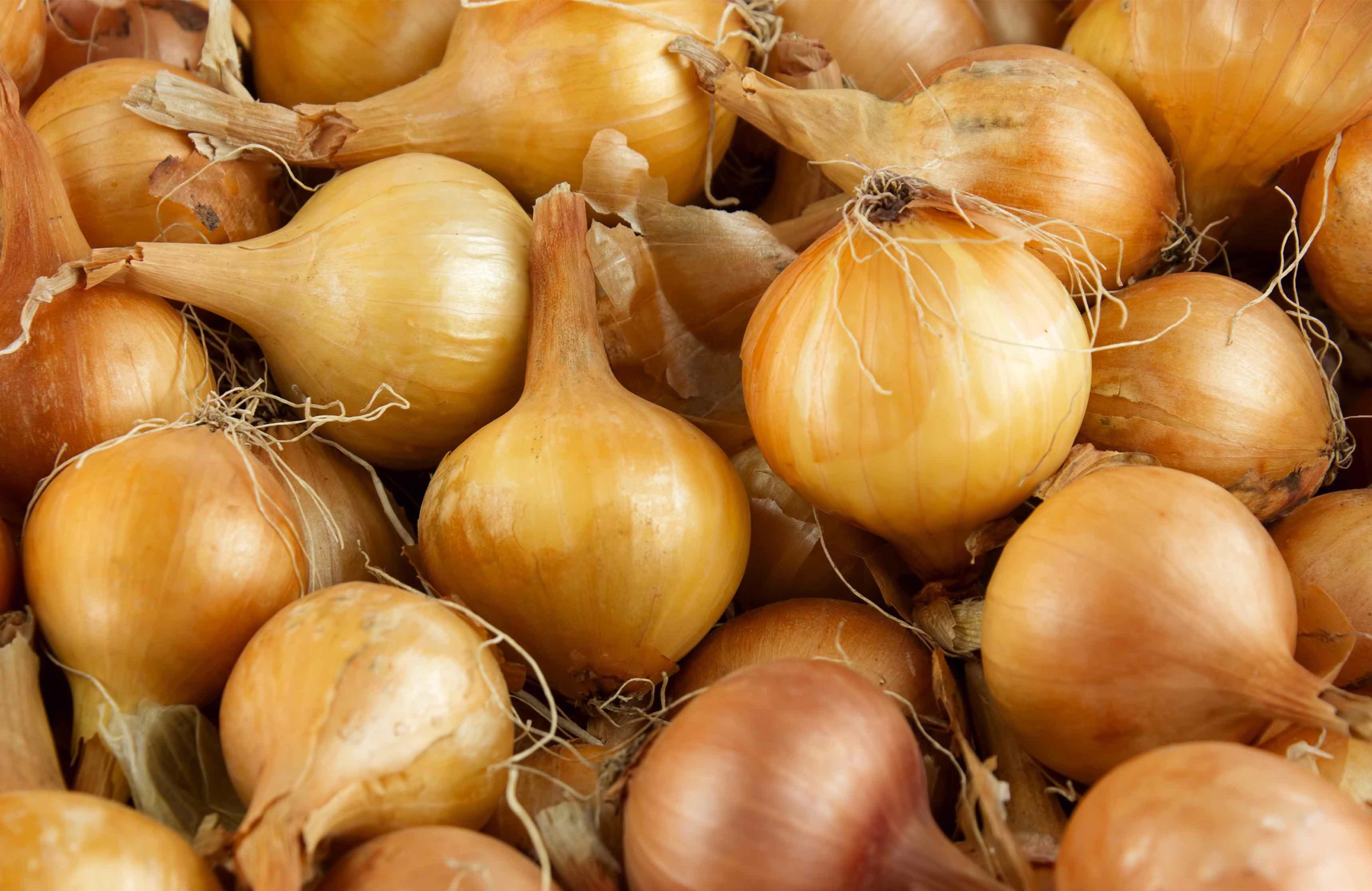Fusarium oxysporum f.sp cepae: the threat against onions
Onions. You chop them into your Friday night salsa, or sauté them in your Tuesday night stir fry. But have you ever thought about the challenges the humble onion faces? The onion has been farmed across the UK for centuries, and on a global scale, the onion is eaten and grown in more countries than any other vegetable, with the earliest record of their culinary use dating back to the Mesopotamian period —although it is safe to say the use of onions can be dated back further to the Bronze Age! (BBC, 2015). Currently, the UK’s onion consumption
can be estimated at around 9kg per person, per year (FAO, 2011). The demand for
onions is steady, and UK farmers often rely on such a crop to yield substantial
profits. But that’s not to say the onion goes without its threats…
The Threats
Harvested in the UK between late summer and early autumn, the onion crop faces the risk of disease, with the soil-borne pathogen Fusarium oxysporum f.sp cepae (FOC) amongst the most economically devastating. This pathogen poses a huge risk to onion health, leading to poor quality, causing root necrosis, water limitation, nutrient loss, a reduction of plant quality and a reduction of mass.
In to market, consumer demands often pressures UK farmers to provide the
Perfect Vegetable; the perfect tomato, the perfect carrot, the perfect onion. However, soil-borne pathogens, such as FOC, can work against this, causing drying scales of yellow bulbs, and the reddening of scales of white bulbs, factors detrimental to obtaining that perfect specimen.
This consequently leads to a decrease in crop yield, profit loss and poor consumer satisfaction. Such pathogens have been on record with losses as much as 50% of total yield, with further losses occurring during crop storage (Leoni et al, 2013). FOC is a major constraint to onion production in the UK, with losses estimated at £11M per annum.
Other pathogens have been previously highlighted such as cavity spot in carrots caused by Pythium; leaf spots and blights caused by the bacteria, Acidovorax, typically seen in ground vegetables pumpkins, squash and cucumbers; Pseudomonas syringae in tomatoes; and Xanthomonas in citrus species and rice (Roberts, 2017). This level of pathogenicity seen across most UK crops can lead to wide scale crop loss if not effectively monitored and managed; with risks associated with growth and development, it is crucial to monitor soils and irrigation systems year-round, pre-harvest and post-harvest, to ensure a healthy ecosystem can be maintained year round for a healthy crop.
The Solution
FungiAlert’s SporSenZ Screen can be utilised to improve farming efficiency, improve crop yield, and as a result, further improve crop health. By monitoring overall soil health, assessing the microbe community and presence or absence of pathogenic microorganisms, measures can be taken to work towards a more sustainable, and efficient farming industry in which disease-causing organisms are eradicated before colonisation.
The use of these sensors is recommended pre and post harvest; pre-harvest analysis is used to ensure the soil of the assessed field is healthy and disease free. Analysing the microbe community at this stage will determine if microorganisms present have the potential to cause the crop harm, i.e. pre season screening for FOC. If present, the FungiAlert team can liaise with site contacts to determine the best course of action to reduce the risk of soil-borne pathogenicity, and furthermore eradicate the risk entirely. In the case of FOC, the best course of action is to introduce more selective crop rotations, recommended between 4 to 5 years between onion crops, with non-host species being selected (Leoni et al, 2013). Post-harvest, a similar approach is taken to asses the crop land, with a look into how the soil may have changed leading up to and during harvest, or if any pathogenic organisms have re-occurred. This will then help to determine post-harvest treatment and crop selection. It is important to note, such analysis can include the effects of microbe communities in soil and irrigation waters, and disease transported via wild animals.
References
- Caroline Leoni, Maria de Vries, Cajo ter Braak, Ariena van Bruggen & Walter Rossing (2013) Fusarium oxysporum f.sp. cepae dynamics: In-plant multiplication and crop
sequence simulations. European Journal of Plant Pathology. 137. 10. - Caroline Leoni, Maria de Vries, Juan Carlos Gilsanz, Ariena van Bruggen & Walter Rossing (2012) Screening crops for their ability to host Fusarium oxysporum f.sp cepae.
- BBC News (2015) Three cheers for the onion.
- FAO (2019) Land & Water; Onions.
- Ju-Young Park, Jianming Jin, Yin-Won Lee, Seogchan Kang & YOng-Hwan Lee (2009) Rice Blast Fungus (Magnaporthe oryzae) Infects Arabidopsis via a Mechanism Distinct from that required for the infection of rice. Plants interacting with other Organisms. Pp.108.
- Larry Beuchat. (1995) Pathogenic Microorganisms associated with Fresh Produce. Journal of Food Protection. 59 (2). pp.204-216.
- Dr S J Roberts (2017) Review of bacterial pathogens of economic importance to UK crops. Plant Health Solutions Ltd.
Megan Russell
27/05/201


